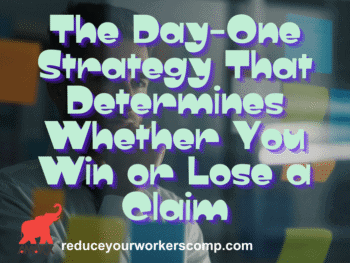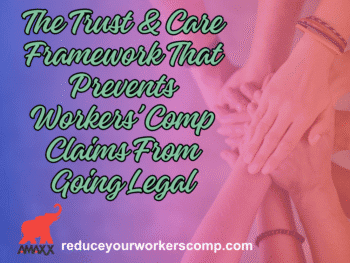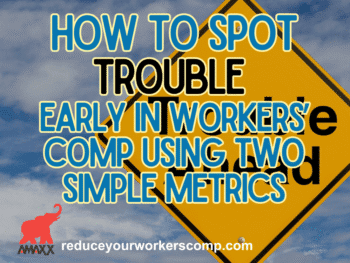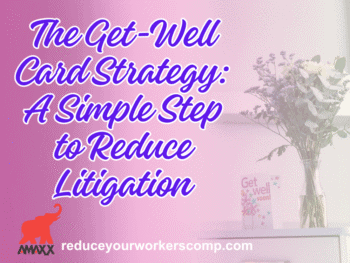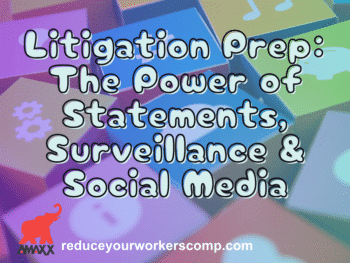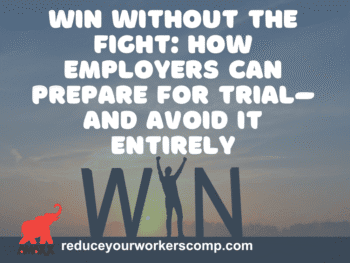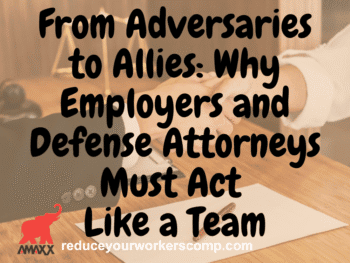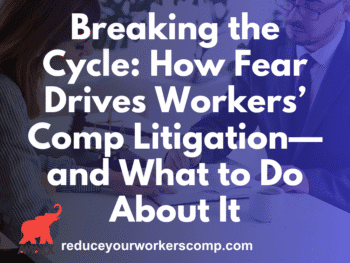
Why Injured Employees Hire Attorneys
There are a number of reasons why employees hire an attorney following an injury. These include:
- Failure to understand the process – everyone gets an attorney, right?
- Failure on the part of the employer and insurance carrier to explain the process, and providing information.
- Fear of retaliation from the employer. While it is illegal in most states to retaliate against an injured employee, there is a common perception that following a work injury, the employee is “damaged goods.”
- Fear that the claim will be denied – even if there is no doubt the injury occurred, and/or the employee requires medical care and treatment.
It is important claim handlers, and employer representatives are responsive, and proactive following an injury. This will take the failure, and fear factors out of the process.
Click Link to Access Free PDF Download
“Avoid the 3 Primary Reasons Injured Workers’ Hire Attorneys”
Lack of (or No) Injury Response
It is important to respond to every work injury in a timely manner. This requires coordination from the employer, and claim management team.
- Employer responsibilities: Employers need to encourage employees to report injuries immediately. Countless studies indicate injuries reported within 60 minutes of their occurrence result in less litigation. Make employees feel comfortable reporting injures, and avoid judgmental language, or responses after an injury.
- Claim management team responsibilities: Insurance carrier need to provide a hassle-free system for reporting work injuries. It is then the responsibility of the claim team to implement procedures to investigation claims, and make decisions of compensability. Contact with the employee should be made immediately, so they know how their claim will move forward, and what additional information they may need to submit.
Bottom line – never blame the employee.
What We Have Here is a Failure to Communicate!
Failure and fear is also driven by a lack of communication. This includes an uncertainty on a number of issues by the employee:
- Was my claim reported?
- Who will be contacting me regarding my claim?
- When can I receive medical care and treatment – and when can I go back to the doctor, and/or work?
Injured employees are required to learn the process while having to deal with a work injury. The lack of communication on the part of the employer representative, or claim handler drives paranoia.
It is simple for employers to take these concerns out of the process by implementing these processes into their workers’ compensation program:
- Provide the employee with information regarding the workers’ compensation process – a step-by-step guide;
- Ensure the employee has the contact information from the workers’ compensation insurance carrier. Follow-up and make sure they have the name, and contact information of the claim handler; and
- Continue to follow-up with the employee on a weekly basis.
Consistent contact is key.
Lack of Supervisor Advocacy
All supervisors need to be advocates for injured employees. While this may seem contradictory to the process, it can pay dividends when done properly in the context of the workers’ compensation claims process.
All persons in a supervisory capacity need to be trained in how they can assist in the claims process by reporting injuries in a timely manner, and ensuring the employee receives immediate medical care. This should include assisting the employee with the paperwork that needs to be completed. They should not preface, lecture, blame, or personalize the injury. Instead, they need to act with compassion, and understanding. Follow-up with the employee is also key. Being an advocate for the employee can also drive effective return-to-work process.
Employers should look to provide their supervisory team with comprehensive training in understanding the psychology of the workers’ compensation process. This training should include examples on how to correctly responds to the needs of an injured employee.
Conclusions
Interested stakeholders in the workers’ compensation claims process should avoid litigation. Steps can be taken at the onset of a claim to avoid problems and reduce the chances a matter is placed into litigation. This requires an understanding of why employees obtain an attorney in the first place, along with an emphasis on injury response, and effective communication. Empathy pays dividends.

Contact: mstack@reduceyourworkerscomp.com.
Workers’ Comp Roundup Blog: https://blog.reduceyourworkerscomp.com/
©2020 Amaxx LLC. All rights reserved under International Copyright Law.
Do not use this information without independent verification. All state laws vary. You should consult with your insurance broker, attorney, or qualified professional.

